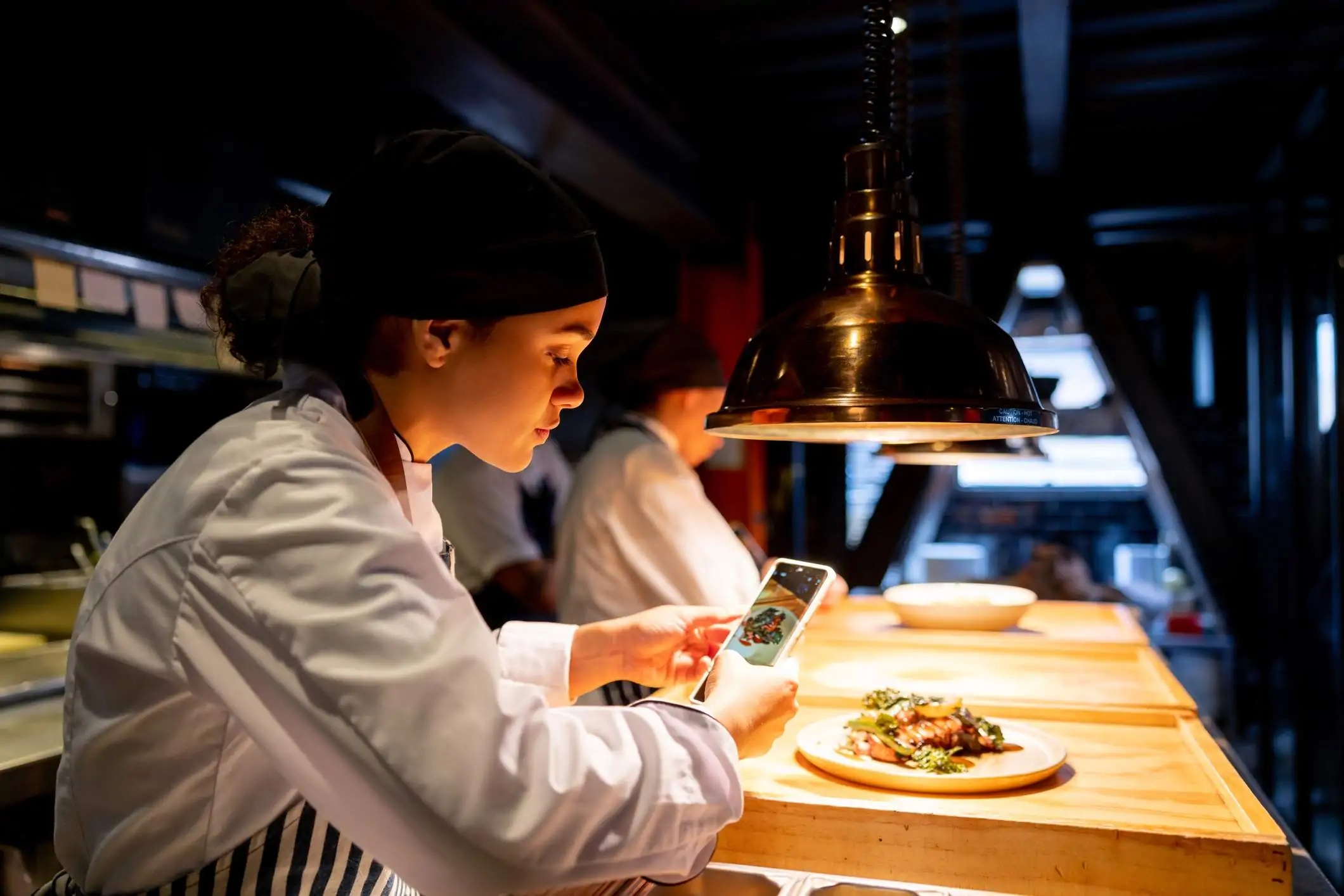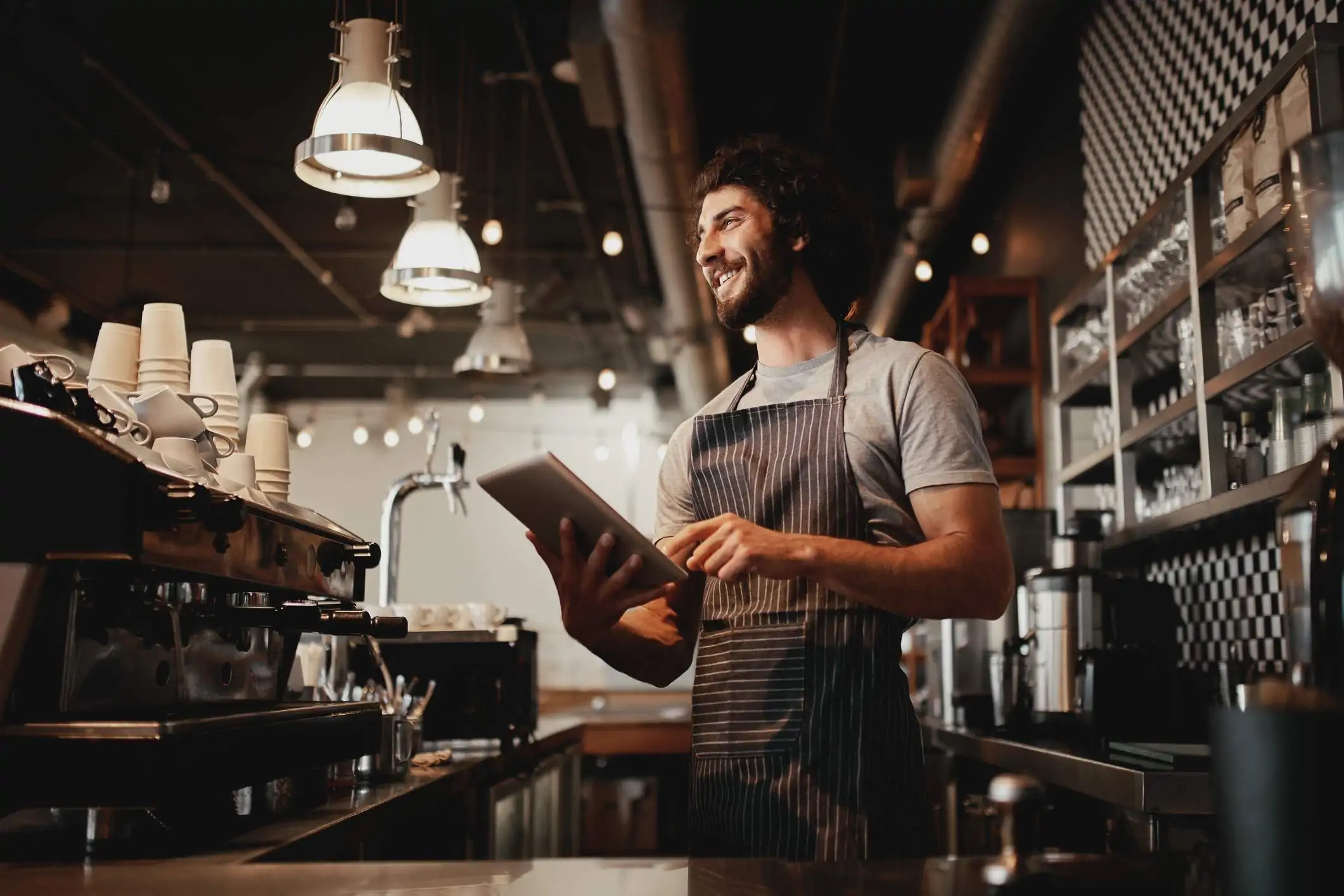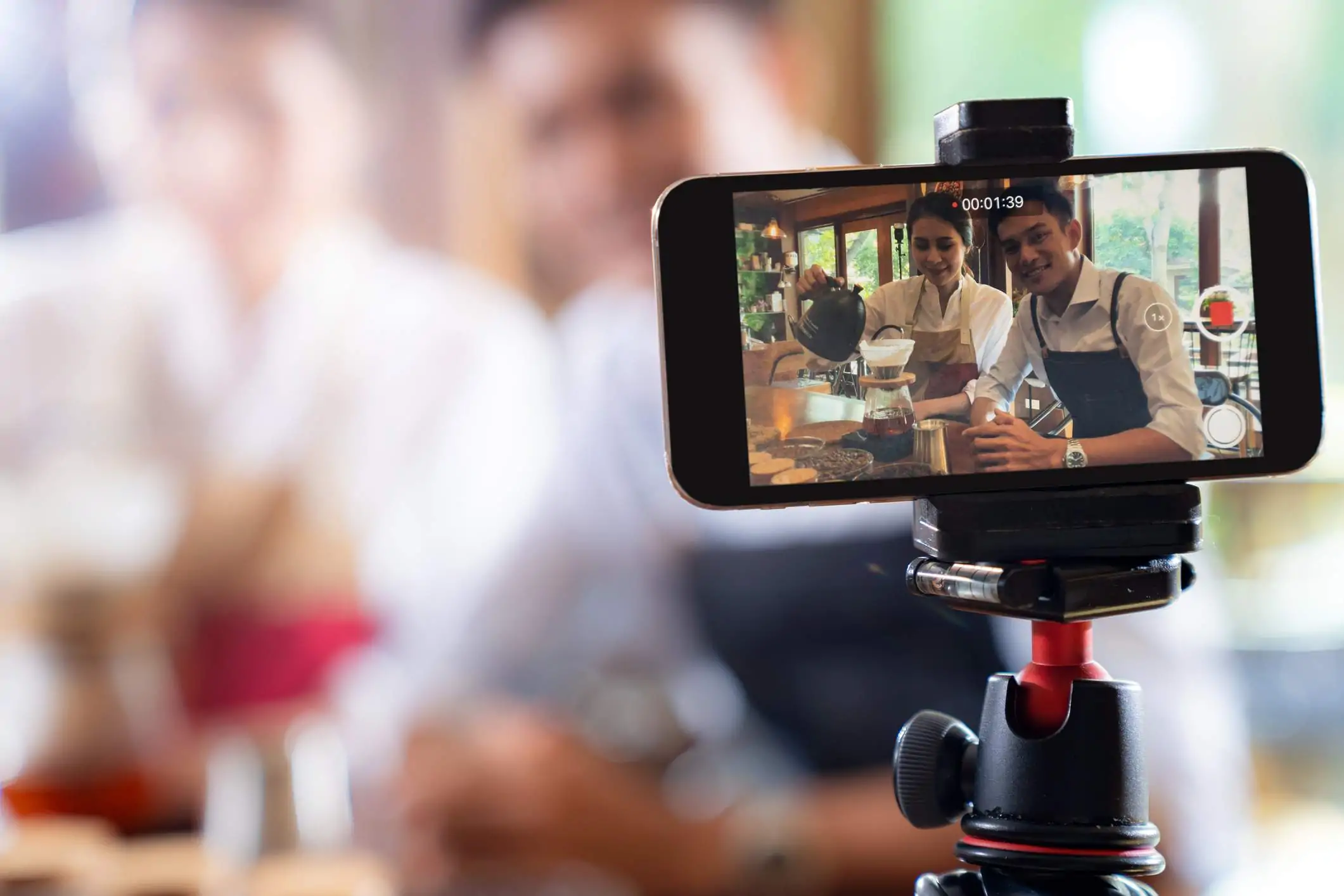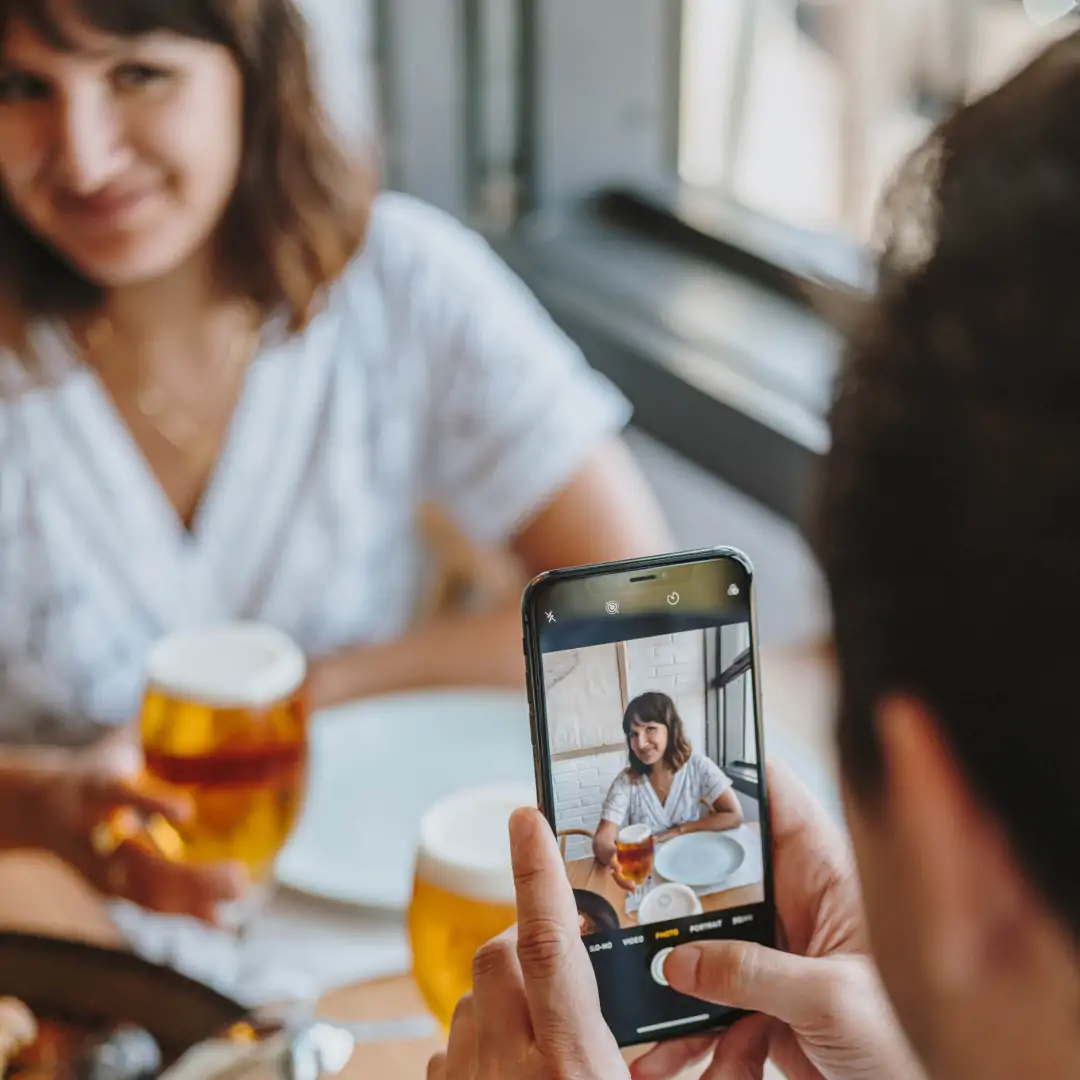Restaurant marketing attracts new customers, keeps regulars coming back, and sets one restaurant apart from the crowd. It’s more important than ever to make savvy marketing central to your business. In this complete guide to restaurant marketing, we’ll cover everything you need to know to take your restaurant to a new level of success.
Quick links
What is restaurant marketing?
Why is restaurant marketing so important?
How to develop a restaurant marketing plan
What is the right restaurant marketing budget?
How to use social media for restaurant marketing
How to use paid advertising for restaurant marketing
How to use email marketing
What is restaurant marketing?
Nobody got into this business for the love of marketing, so restaurateurs can be forgiven if they lack expertise and interest in this part of the work.
Let’s start with the absolute basics: Restaurant marketing refers to the strategies and tactics that restaurant owners use to promote their business and attract customers.
In the competitive landscape of 2023, effective marketing is a key driver of growth for restaurants and all other businesses. Ignore it at your peril.
There are tons of types of restaurant marketing these days. You’ve got the old ways: traditional advertising methods such as signs and billboards as well as print and radio ads. Then there are the newer ways: digital marketing tools like social media, email marketing, and search engine optimization (SEO). And the quest to land media coverage on TV, in print, and online, also known as “earned media,” is eternal.
The good news is that you don’t have to do every kind of marketing under the sun. The secret sauce of successful restaurant marketing is to pick the strategies that work best for your specific restaurant, guests, and goals.

Why is restaurant marketing so important?
Today, restaurant marketing is essential for success. This is just as true for independent mom-and-pop restaurants as it is for large chains. The restaurant industry has been evolving at warp speed and so have the wants and needs of guests.
It’s vital to have a thoughtfully planned and expertly executed marketing strategy to magnetize the right people. Regularly brainstorming restaurant marketing ideas should be built into your workflow.
Not only does marketing put butts in seats directly, it also builds your brand identity and reputation as you continually get the message about your restaurant out there over time. Through marketing, people can get to know you, your menu, the kinds of events you host, and even your team before they ever step foot in the restaurant.
Social media platforms, an OpenTable profile page, email marketing, and paid advertising can all be used to entice potential guests through the door and drive traffic to the restaurant’s online presence.
But even when guests aren’t dining with you, marketing helps you stay top of mind between visits, driving repeat visits and creating loyal customers. By staying in touch with guests in their inboxes, through social media posts, and elsewhere online, restaurants nurture relationships that keep their brand relevant.
How has restaurant marketing changed over the years?
Pre-Internet, old-fashioned marketing methods such as print ads, radio ads, direct mail, and billboards were the best ways for restaurants to promote themselves. The rise of social media has completely remade this marketing landscape.
Today, there’s a staggering variety of digital marketing tools at your disposal: Instagram, Facebook, TikTok, Snapchat, YouTube, email, Google ads, Boost campaigns, and Bonus Points campaigns to name a few. These tools let restaurants target guests in amazingly specific and effective ways.
All this tech has also made it easier for restaurants to collect data about guest preferences and behavior, allowing them to create highly personalized marketing campaigns and tailor their offers to the needs and wants of specific groups.
In a way, digital marketing has leveled the playing field in the industry and given small and independent restaurants a chance at competing with larger chains. It’s clear that those who prioritize digital restaurant marketing strategies and stay up-to-date on the latest trends are more likely to see sustainable success in the years ahead.

How to develop a restaurant marketing plan
The first step to uplevel your restaurant marketing is to create a marketing plan. In a nutshell, a marketing plan is a blueprint that outlines your marketing efforts for a specific time period.
It spells out your marketing objectives and actions as well as the results you want to achieve. It takes some effort to put a plan like this together, but it will save time in the long run.
A simple but strategic marketing plan can help you identify your ideal guests, set concrete goals, allocate resources wisely, and create campaigns that get results.
Here’s a step-by-step guide on how to create your marketing plan:
Do some market research
Start with a clear-eyed look at your competition. This will help you identify your target audience, understand their wants, and create marketing messages that resonate authentically with them.
Set clear goals
Describe your desired outcome in specific terms. These might include target sales numbers and guest loyalty benchmarks.
Set your budget
Allocate a realistic and specific amount of money for your marketing plans. This will help you prioritize your marketing efforts and ensure you get the best ROI.
Choose your channels
Determine which marketing channels are the most effective for reaching your desired guests, such as organic social media, email marketing, or paid advertising.
Sketch out a content calendar
Plan out your marketing activities for the month or the quarter and decide when you’ll do them.

Who is your ideal guest avatar and how to create one?
The ideal guest avatar can be like a decoder ring for your whole marketing strategy. Simply put, an ideal guest avatar is a fictional representation of your restaurant’s ideal regular. It’s a profile that includes demographic information, interests, behaviors, and pain points.
By creating an ideal guest avatar, you can better understand your guests and send marketing messages that feel like you’re talking personally to them.
4 steps to creating your ideal guest avatar
- Gather and review information about your guests. Use tools like surveys, customer feedback, guest notes, and social media analytics to learn more about their preferences and behaviors.
- Create a profile that includes details such as average age, gender, income, occupation, hobbies, and preferred dining occasions for some imaginary person who would be your dream regular.
- Give your ideal guest avatar a name and a backstory. This will help you imagine them as a real person with specific needs and motivations. Think about the challenges they face when dining out. Consider how your restaurant can solve these problems and provide a special dining experience that exceeds their expectations.
- Use your ideal guest avatar to guide your marketing efforts. Create content and creative promotions that speak directly to their interests. Customize your messaging and advertising to appeal to your ideal guest avatar and use social media platforms they frequent.
By creating a strong connection with your ideal guest avatar, you can build a loyal customer base and increase your restaurant’s revenue. It’s counterintuitive that marketing to a single imaginary guest can help you draw a lot of new people to your restaurant, but it’s a time-tested marketing strategy that gets results.
What is the right restaurant marketing budget?
Finding the sweet spot in terms of how much to spend on marketing is notoriously tricky. You want to get as much out of those dollars as possible. Overspending and underspending are both real risks.
The first step to determining the right marketing spend for your restaurant is to set a budget that feels comfortably within your means. Determine how much you can really afford to spend on marketing each month or quarter, and stick to that budget.
Next, decide on your channels, such as social media, email, paid search, etc. These options all come with different price tags and varying bang for the buck. Once you’ve chosen your channels, decide what you want to spend on each. Think through the potential reach and effectiveness of each channel.
Over time, you’ll be able to get granular about the ROI for various types of marketing and that will shape your plan and budget as you move forward.
If one particular marketing channel is performing very well, it’s time to increase the budget there. At the same time, keep your eyes peeled for underperforming channels so you can move that money into marketing that works.

How to build a strong restaurant brand
Branding can be an overlooked form of marketing because it’s less quantifiable than other strategies. Building a beloved restaurant brand requires showing up with clear and consistent messaging over time. It takes strong visuals, memorable dining experiences, and media savvy.
Following these tips to build a brand that wins fans:
Define your brand by your values
Start by laying out the restaurant’s values. This will help you create a clear and consistent message that resonates with your target guests. Many restaurants have core values of community, fun, or social justice.
If things like sustainability and community service matter to you, shout it out. Many customers are drawn to restaurants that prioritize values they share. Highlight your efforts in these areas to build a strong brand that resonates with people.
Hone a visual identity
Your visual identity includes everything from your logo and color choices to the look of your menu and website. Make sure all visual elements are consistent and reflect your chosen vibe.
Focus on the guest experience
The experience your guests have at your restaurant makes or breaks a brand. Make sure your service is friendly and welcoming, your food is high-quality and consistent, and your atmosphere is warm, memorable, and preferably Instagrammable.
Engage on social
Social media marketing is a powerful tool for building your brand and engaging with guests when they aren’t in the dining room. Show off your food, people, and events—anything that brings your restaurant’s personality to life. If you come across a negative review online, respond and try to make it right if possible.
How to optimize your website for SEO
As more and more customers are turning to online sources to pick restaurants and make reservations, you’ve got to have a strong online presence. You want your restaurant’s website to be optimized for search engines (SEO).
It doesn’t have to be complicated. Use words on your website that you think potential guests will search for. Place these keywords throughout your website, especially on your menu items description and about page.
A website’s structure and navigation also play a role in SEO. Make sure it’s easy for visitors to find the information they’re looking for, such as the menu, hours of operation, and contact information. Also, check that the website is mobile-friendly. Most people will be looking at it on their phones.
Overall, optimizing your restaurant’s website for SEO can boost online visibility and drive more guests through your doors.

How to use social media for restaurant marketing
Social media has become an essential tool for marketing in all industries. With billions of active users, it’s a powerful way to engage guests and potential guests.
If you aren’t already active on social media, start with one platform where you know your guests spend time. Post the best photos and videos you can. Don’t forget to keep the “social” in social media by actually having conversations with followers. When people comment on a post, reply. Pose questions, ask for suggestions, and repost things your guests share about you.
Using social media for restaurant marketing can help increase brand awareness, drive traffic to your website, and ultimately boost sales, both on-premise and through online ordering. Remember to track your results to refine your approach over time.
How to use paid advertising for restaurant marketing
Paid advertising, also known as paid media, can be a powerful tool for restaurant owners looking to build brand awareness and attract new guests. On the flip side, the world of paid advertising can be confusing and expensive.
If you’re going to invest in paid ads, spend some time investigating which are the right advertising channels for your restaurant. Google ads and Meta (Facebook and Instagram) ads are popular choices, but they’re far from the only ones. Research the different options and choose the channels that best fit your restaurant’s goals.
When investing in ads, you want to make sure you have the most effective ad copy and visuals as possible. It may be worth the money to enlist a professional to create the kind of polished ads most likely to get results.
Setting and sticking to a budget is also crucial for successful paid advertising. Start with a smaller budget and test different strategies to find what works best for your restaurant. And always track your metrics and know your ROI. That way you can adjust your strategy to maximize the benefits and minimize the risk of wasting money.
How to use email marketing
In the digital age, email marketing is an essential tool for any business to reach customers.
For restaurant owners, email marketing can be especially beneficial. Here are just a few reasons why your restaurant should be using email marketing:
Drive repeat visits
Send personalized messages to your guests that invite them to come back to your restaurant, especially when you haven’t seen them in a while. This can be in the form of special offers (such as buy one get one free), loyalty rewards, or even just a friendly reminder that you’re open. Repeat customers, aka regulars, can make or break a restaurant.
Save money
Compared to most other marketing channels, email marketing is relatively cheap. It allows you to reach a large number of people at a low cost. Email can provide a significant return on investment.
Track results
Email marketing campaigns can be easily tracked, allowing you to see how effective your campaigns are and make changes accordingly.
Effective restaurant marketing drives growth and sets your restaurant up for success. By developing a strategic marketing plan and making the most of select channels you can win a steady stream of new guests and foster loyalty in your customer base.




